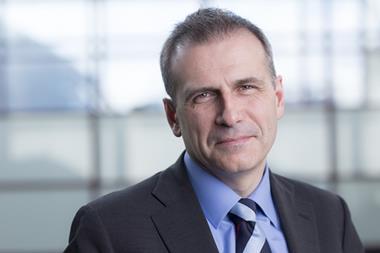Following the business interruption insurance backlash surrounding the FCA’s test case, the ABI’s director general believes the sector’s recent focus on diversity, inclusion and mental health can help mitigate insurers’ reputational damage
It has been a challenging year for insurers, not least because of the FCA’s test case around the interpretation of business interruption (BI) policy wordings for Covid-19-related claims.
However, ABI director general Huw Evans believes that the association’s recent work on diversity, inclusion and mental health “does tell a different story here about our sector” and that “there’s loads we can do which will improve our reputation, build levels of public trust and we should absolutely work together as a sector to do it”.
On 29 September, for example, the ABI launched its new mental health standards for travel, health and protection insurers to better support customers with mental health conditions – these need to be fully implemented by December 2021.
Furthermore, on 7 October, the ABI and 32 member organisations signed Business in the Community’s Race at Work Charter, which sets out five principles that signatories must adhere to in order to help improve workplace opportunities for black, Asian and minority ethnic colleagues. Alongside this, the ABI also announced a refresh of its inclusion strategy, first launched back in 2018.
Although Evans admits that most of this work predates the current industry storm around Covid-19 – the mental health standards, for example, took two years to bring to fruition – he does think these projects can polish the industry’s blighted reputation.
He says: “The industry will always get a rough time in public when there’s a claims dispute. This is the first time it’s happened in a while, but it has happened in the past, it will happen in the future.
“If you have unprecedented situations that pose big questions for insurance contracts about whether they pay out or not, there will always be a row, there will always be some reputational damage. I’m not complacent about that, but it is a fact of life.
“All this work predates this, but it does tell a different story. It tells a story about our sector that wants to modernise and continue to improve, to have a better understanding if we’re talking about mental health about some of the vulnerabilities of our customers and how to ensure they are not put off buying insurance or using the insurance products they may have bought, notwithstanding some of their health conditions, and we have to be ever better in helping customers through that journey.
“And then as employers, as a part of society, that we have to play our part in tackling racism, in building more inclusive workforces, making ourselves a sector that people from a wide range of backgrounds want to work in, can access and can then thrive in once they’re in it.”
Evans says he believes strongly that the sector has a huge amount to offer, but it can’t be complacent about how easy it is to enter and work in, or what the experience might be.
“That’s why things like this charter are important because they put in place basic standards that all firms should follow to ensure that we are as good at inclusion as we might like to think we are,” he says.
“Although it’s been a tough year in some respects for insurers, with some of the headlines that we’ve seen, it’s really important to keep looking forward and focus on some of the areas where we can make a difference, both as employers, as contributors to society and in terms of the way in which we engage with our own customers.”
Leading by example
For Evans, committing to the Race at Work Charter is one way in which the ABI can lead by example and ensure that it is going on the same journey, at the same time, as many of its member companies. Evans feels this will have a greater result.
“We want to help lead by example and make it easy for firms to take manageable steps,” he says. “What we can do, particularly at a time when they are very busy and they’ve got huge demands on their time, is to try and make it easy.
”That’s something we’re all passionate about. Whether it’s identifying something like the Race at Work Charter, validating it, helping explain what it does and what you can do, and do the work for them in many respects.
“As an industry, we can go on this journey together, learn from each other’s mistakes, be encouraged by each other’s successes and together make a difference. Because it’s in all our interests that we make progress on this. Then we have the best possible talent pool in our sector, that means we do a good job for customers and we have a healthy future.
“We’re one sector – if we work as a sector, we work collaboratively with each other, then I think we can all make a difference and get a lot more done than if we all just operate in our little siloes.
“This isn’t about competitive advantage for any one firm across the other. As the ABI, we are in a really great place to be able to pool resources, share best practice and help everyone go on the journey as quickly as possible.”
The Race at Work Charter will help the ABI and its members “have more of a specific focus on race”, Evans adds, “in particular, on ethnic minority inclusion and how to make sure people from ethnic minority backgrounds feel comfortable coming into our sector and have a good experience and can see their careers develop and thrive.”
Why has diversity historically been a challenge for the insurance sector?
According to Huw Evans, director general of the ABI, the insurance industry still has “an image problem”, which means it has “struggled to attract a range of people from different backgrounds into our sector”.
For example, many believe that a maths or science-focused educational background is needed to work in insurance. “We know for a start that more men than women study science and maths at university than women do, so the moment you have that problem, then you have a subsequent problem,” Evans says.
Furthermore, Evans adds that insurance historically hasn’t had many role models, although this is changing.
What is included in the ABI’s updated inclusion strategy?
 Huw Evans
Huw Evans
The new two-year plan has been informed by employee feedback, Evans says. It now includes specific training on the experiences of black people within the workplace, as opposed to other ethnic minority groups, and an emphasis on blind recruitment for all candidate shortlisting to eliminate unconscious bias – this involves candidates answering a series of questions and being shortlisted based on their answers rather than their CV.
The ABI is also looking to promote job sharing in order to combat the gender seniority gap – it plans to launch a private sector job share portal in the first half of 2021. This will enable employees of ABI members to log in, create a profile and then find a job share partner with similar skills and experience. They will then be able to jointly apply for roles.
Evans says that although graduates entering insurance are a 50:50 male and female split, only 20% of c-suite staff are women. “What happens for most women is motherhood and this is a sector that is really bad at being able to get women back into the workplace and see their careers thrive once they’re back,” he adds.
Hosted by comedian and actor Tom Allen, 34 Gold, 23 Silver and 22 Bronze awards were handed out across an amazing 34 categories recognising brilliance and innovation right across the breadth of UK general insurance.




















































No comments yet